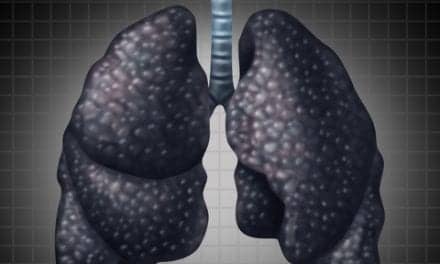A drug, normally prescribed for patients with acute heart failure, may be effective in improving muscle function in patients with respiratory muscle weakness, which often accompanies chronic diseases such as chronic obstructive pulmonary disease (COPD) and congestive heart failure. Researchers found that levosimendan increases the sensitivity of muscle tissue to calcium, improving the muscle’s ability to contract. Their findings appear in the American Journal of Respiratory and Critical Care Medicine.
“We found that the calcium sensitizer levosimendan improves the mechanical efficiency of the human diaphragm, suggesting a new, therapeutic approach to improve respiratory muscle function in patients with respiratory failure,” said Leo Heunks, MD, PhD, a pulmonary and critical care physician at Radboud University Nijmegen Medical Center in the Netherlands.
Calcium is a necessary element in muscle contraction, and calcium sensitizers like levosimendan improve muscle tissue’s ability to contract by making them especially sensitive to the effects of calcium. In vitro studies have demonstrated calcium sensitizers improve the function of the respiratory muscles, and results of animal studies have shown calcium sensitivity is reduced in specific chronic illness settings. A recent in vitro study of diaphragm muscle tissue taken from COPD patients showed levosimendan enhanced the ability of those tissues to contract.
Based on the results of those studies, the researchers in this study looked at whether levosimendan would improve the ability of the diaphragm muscle to contract in healthy volunteers.
The researchers enrolled 30 healthy volunteers and randomized them to receive either levosimendan or placebo. Each volunteer performed two identical breathing exercises, one before receiving levosimendan or placebo and one afterward. During each exercise, the researchers used a specialized catheter to measure the nervous system’s stimulation of the respiratory muscles and the amount of force those muscles used in forced exhalation. Magnetic nerve stimulation was used to evaluate the movements of the diaphragm before and after the exercise period, and heart rate, blood pressure, exhaled carbon monoxide, and blood oxygen levels were continuously measured.
At the end of the study, subjects in the placebo group had a 9% loss of muscle contraction following the exercises, while those in the levosimendan group had no loss of contraction. In addition, the mechanical efficiency of the diaphragm during the exercises improved by 21% in the levosimendan group compared to the placebo group, meaning subjects treated with levosimendan needed less effort than those treated with placebo to achieve the same amount of muscle force.
While the researchers found that levosimendan essentially prevents the development of respiratory muscle fatigues, they note that larger studies are necessary to confirm these results and determine optimal dosage.
Source: American Thoracic Society









